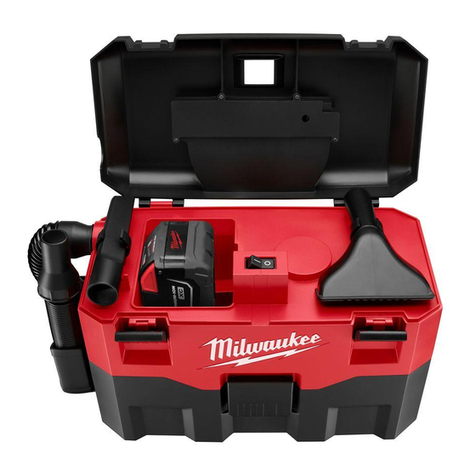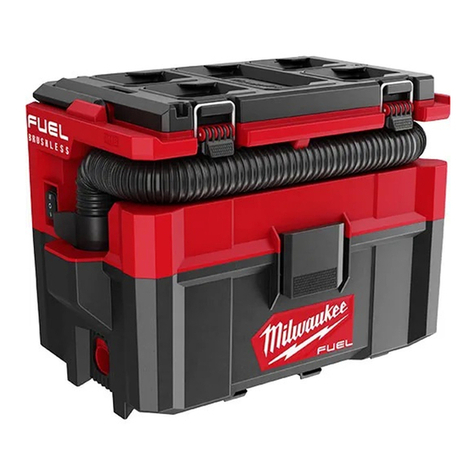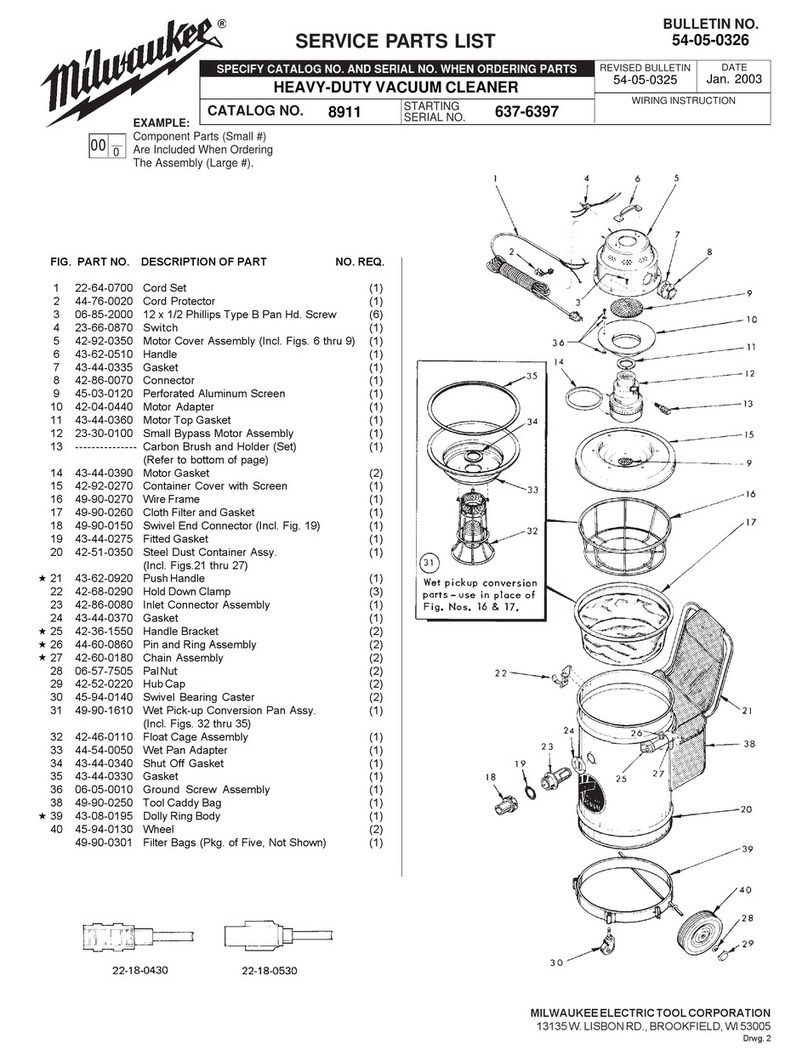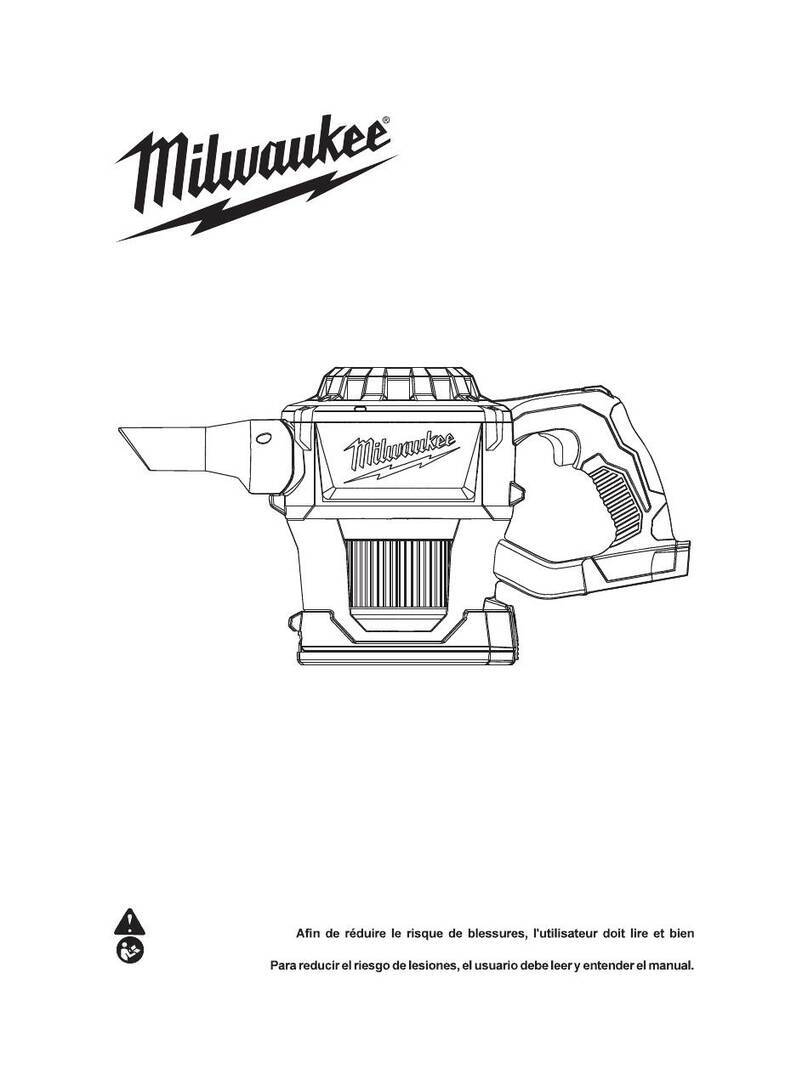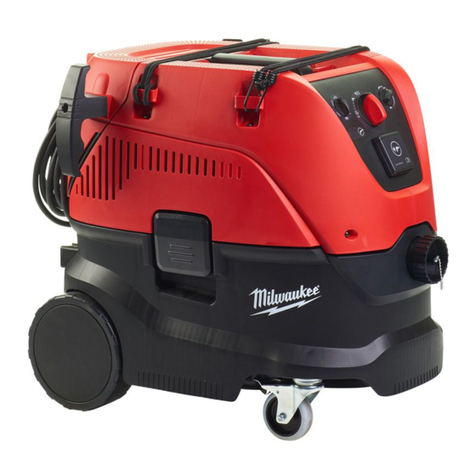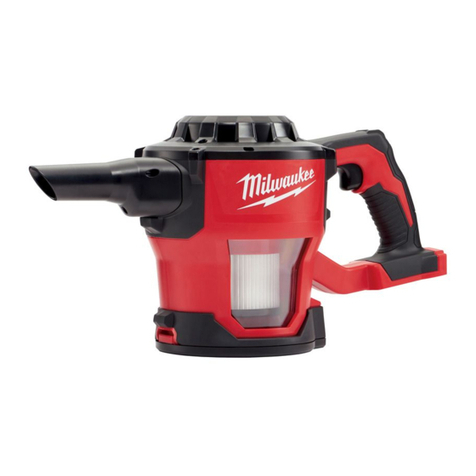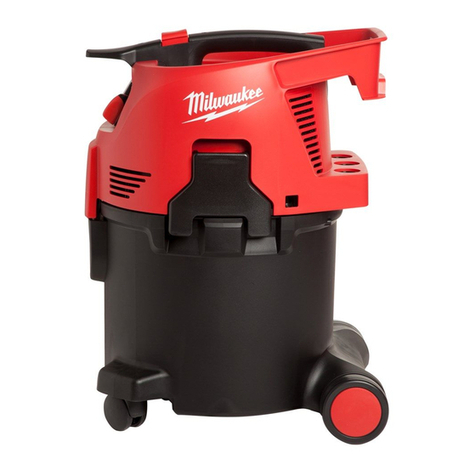
BATTERY TOOL USE AND CARE
manufacturer. A charger that is suitable for one type
with another battery pack.
•
battery packs. Use of any other battery packs may
•When battery pack is not in use, keep it away
from other metal objects, like paper clips, coins,
keys, nails, screws or other small metal objects,
that can make a connection from one terminal
to another. Shorting the battery terminals together
•Under abusive conditions, liquid may be ejected
from the battery; avoid contact. If contact acciden-
eyes, additionally seek medical help. Liquid
ejected from the battery may cause irritation or burns.
•
•
Do not use a battery pack or tool that is
damaged or modified. Damaged or modified
batteries may exhibit unpredictable behaviour
resulting in fire, explosion or risk of injury.
Do not expose a battery pack or tool to fire or
excessive temperature. Exposure to fire or
temperature above 130°C (265°F) may cause
explosion.
SERVICE
•Follow all charging instructions and do not charge
the battery pack or tool outside the temperature
Charging im-
•
•
repair person using only identical replacement
SPECIFIC SAFETY RULES FOR
COMPACT VACUUM
Never use vacuum without dust canister and
Wear ear protectors. Exposure to noise can cause
hearing loss.
•
•lead from lead-based paint
•crystalline silica from bricks and cement and other
masonry products, and
•arsenic and chromium from chemically-treated
lumber.
WARNING
To reduce the risk of injury, when
working in dusty situations, wear
appropriate respiratory protection or use a
suitable dust extraction solution.
Always use common sense and be cautious
when using tools. It is not possible to anticipate
every situation that could result in a dangerous
outcome. Do not use this tool if you do not
understand these operating instructions or you feel
the work is beyond your capability; contact
MILWAUKEE®Tool or a trained professional for
additional information or training.
WARNING
Some dust created by power
sanding, sawing, grinding, drilling,
and other construction activities contains chemicals
known to cause cancer, birth defects or other
reproductive harm. Some examples of these
chemicals are:
READ AND SAVE ALL INSTRUCTIONS FOR
FUTURE USE
FOR HOUSEHOLD OR COMMERCIAL USE.
Your risk from these exposures varies, depending
on how often you do this type of work. To reduce
your exposure to these chemicals: work in a well
ventilated area, and work with approved safety
equipment, such as those dust masks that are
specially designed to filter out microscopic
particles.
The product is intended for commercial use, for
example in hotels, schools, hospitals, factories,
shops, offices and rental businesses.
•
parts. This will ensure that the safety of the
product is maintained.
ADDITIONAL BATTERY SAFETY RULES
WARNING
To reduce the risk of fire, personal
injury, and product damage due to
a short circuit, never immerse your tool, battery
pack or charger in fluid or allow a fluid to flow inside
them. Corrosive or conductive fluids, such as
seawater , certain industrial chemicals, and bleach
or bleach-containing products, etc., can cause a
short circuit.
Exhausted batteries are to be removed from the
appliance and safely disposed of.
3
•
For user servicing, the machine shall be
dismantled, cleaned and serviced, as far is
reasonably practicable, without causing risk to the
maintenance staff and others. Suitable
precautions include decontamination before
dismantling, provision for local filtered exhaust
ventilation where the machine is dismantled,
cleaning of the maintenance area and suitable
personal protection.
The manufacturer or an instructed person shall
perform a technical inspection at least annually,
consisting of, for example, inspection of filters for
damage, air tightness of the machine and proper
function of the control mechanism.
When carrying out service or repair operations, all
contaminated items which cannot be satisfactorily
cleaned are to be disposed of; such items shall be
disposed of in impervious bags in accordance with
any local current regulations for the disposal of
such waste.
•
•
•





